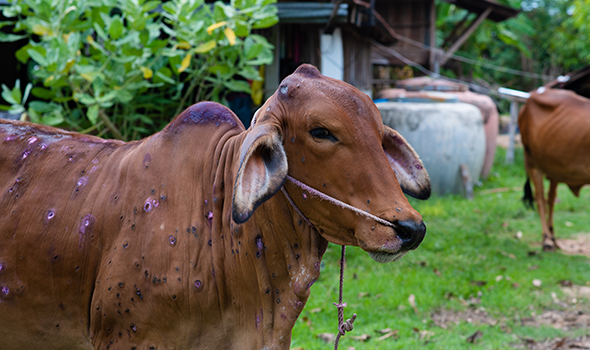
Animal Healthcare
Management of skin diseases in farm animals
Skin diseases in farm animals are mainly due to bacterial, viral or fungal infection. Endocrine skin diseases , tumor conditions , nutritional skin disease and skin condition due to poisoning are also common in animals. Skin condition where pus formation occurs are mainly due to bacterial infection. Parasitic skin diseases are mainly due to ticks, lice, mites, fleas and flies.
-
Clinical signs and lesions
In case of lumpy skin disease (LSD) infected cattle develop fever, lacrimation, nasal discharge, and hypersalivation, followed by the characteristic eruptions on the skin and other parts of the body in ~50% of susceptible cattle. The incubation period is 4–14 days. The nodules are well circumscribed, round, slightly raised, firm, and painful and involve the entire cutis and the mucosa of the GI, respiratory, and genital tracts. Fungal infection in animals like hair loss with scaling and sometimes with inflamed borders are common signs. Animals exhibiting skin diseases as thickening of skin with intense irritation alopecia should be separated immediately.
-
Treatment
- For fungal infection Griseofulvin 25-50 mg/kg body weight and in some animals amphotericin B may be useful.
- Cleaning of skinFor skin lesions with pus formation, cleaning skin with shampoo such as hexetidine or 2.5% peroxide is advisable.
- Applying Topicure sprayTopicure spray is recommended for the treatment of wound lesions in LSD.
- VaccinationThere is no treatment for the viral diseases like LSD in cattle. So prevention by vaccination is the most effective means of control.
- Applying herbal preparationsHerbal preparations having garlic extract, turmeric powder, lemon extract, camphor, and onion extract may be applied.







Add your comment